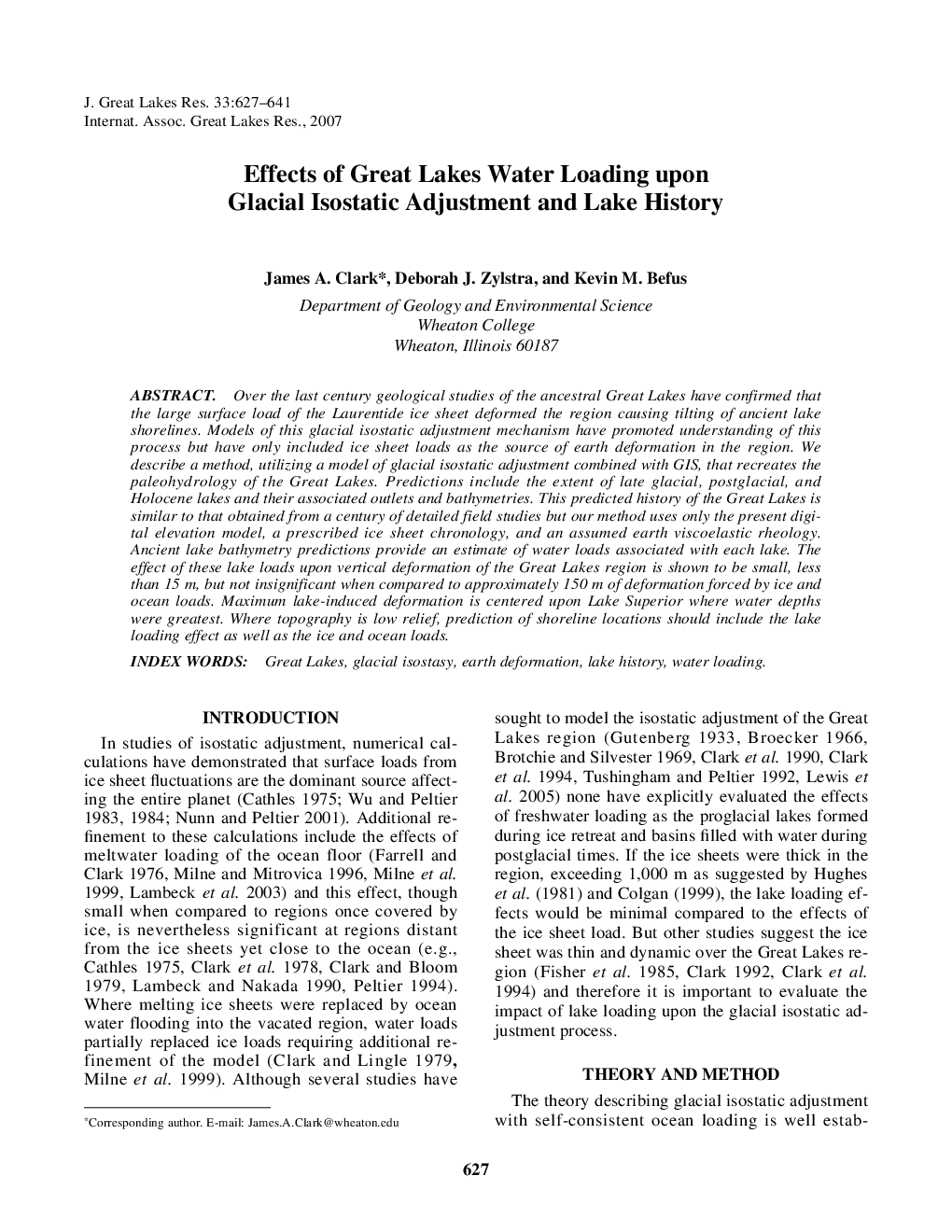| Article ID | Journal | Published Year | Pages | File Type |
|---|---|---|---|---|
| 4399434 | Journal of Great Lakes Research | 2007 | 15 Pages |
Abstract
Over the last century geological studies of the ancestral Great Lakes have confirmed that the large surface load of the Laurentide ice sheet deformed the region causing tilting of ancient lake shorelines. Models of this glacial isostatic adjustment mechanism have promoted understanding of this process but have only included ice sheet loads as the source of earth deformation in the region. We describe a method, utilizing a model of glacial isostatic adjustment combined with GIS, that recreates the paleohydrology of the Great Lakes. Predictions include the extent of late glacial, postglacial, and Holocene lakes and their associated outlets and bathymetries. This predicted history of the Great Lakes is similar to that obtained from a century of detailed field studies but our method uses only the present digital elevation model, a prescribed ice sheet chronology, and an assumed earth viscoelastic rheology. Ancient lake bathymetry predictions provide an estimate of water loads associated with each lake. The effect of these lake loads upon vertical deformation of the Great Lakes region is shown to be small, less than 15 m, but not insignificant when compared to approximately 150 m of deformation forced by ice and ocean loads. Maximum lake-induced deformation is centered upon Lake Superior where water depths were greatest. Where topography is low relief, prediction of shoreline locations should include the lake loading effect as well as the ice and ocean loads.
Related Topics
Physical Sciences and Engineering
Earth and Planetary Sciences
Earth and Planetary Sciences (General)
Authors
James A. Clark, Deborah J. Zylstra, Kevin M. Befus,
